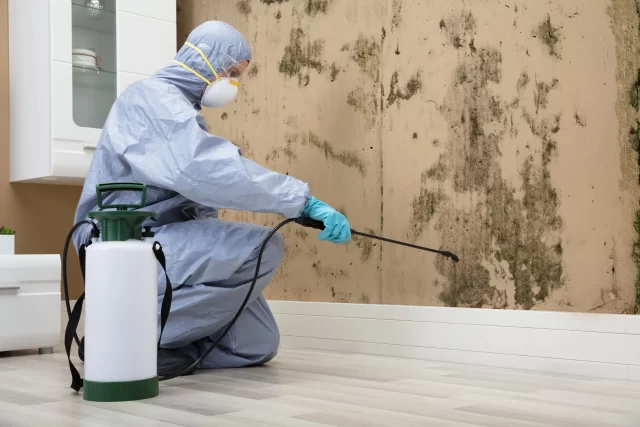Once you’ve completed mold remediation, what do you throw away? Many homeowners feel overwhelmed and unsure about what to do with all the materials they’ve gathered. Here are some tips for cleaning up moldy carpeting, walls, clothing, and more. Once you’ve gotten rid of the mold, make sure to dispose of porous materials like paper and wallboard. The carpet, drapes, and upholstery should also be thrown out.
Clean up moldy carpeting
Cleaning up moldy carpeting can be a difficult, but not impossible task. Your home is your sanctuary, and you take great pride in keeping it as clean as possible. You probably have a checklist and go-to-cleaning solution, so you might not notice the stains on your carpet. Luckily, it is relatively easy to clean moldy carpeting yourself! Just follow these tips for effective cleaning. Let’s begin!
To start Mold Removal Tulsa cleaning your carpeting, you’ll need to determine if the area has been exposed to warm and moist conditions. If you’re unsure, consider removing the entire rug and taking the affected areas outside. Not all molds are harmful to humans, but it is important to be cautious when handling them. You can even use fans to speed up the drying process. Once the mold has been removed, you’ll need to get rid of the carpet and any remaining mold.
Clean up moldy furniture
To get rid of Mold, you must clean up furniture after Mold Remediation Tulsa. You must be careful not to inhale the mold spores or dust, as they may cause health problems. Make sure you use gloves and a HEPA-filtered vacuum to clean up moldy furniture. Ensure the furniture is thoroughly dried after cleaning. If you can use a damp cloth to wipe off the residue. In the event of light mold, sunlight will do the trick. You can use it in the early morning, after the dew has cooled, or even after sunset. You can use bleach or a mixture of equal parts water and white vinegar.
If you find mold on furniture, don’t paint or caulk it until it is completely dry. Trying to paint or cover a moldy surface will make it even more difficult to remove. The paint will peel or crack if it has any traces of mold. To avoid further damage, consult a mold remediation specialist. Many of these professionals are listed in local phone books and on the internet. Check for references and professional affiliations before hiring a mold remediation specialist.
Clean up moldy walls
If you have moldy walls, you will need to do more than just wash them with Mold Removal Tulsa OK. You will also need to remove any debris. You can use a vacuum cleaner to remove any loose dust and dirt. You can also spray white vinegar on the affected area. The mixture of vinegar and water will help remove the mold and make the walls look new again. You will need to repeat this process several times. You can use the same bleach solution to treat moldy ceilings as well.
If the mold growth on your wall is only a small patch, you can use Dawn dish soap or borax. Scrub the area well with the mixture. Make sure you rinse thoroughly with clean water and pat dry with a towel. If there is a large area of mold, you will need to hire an expert to clean it up. You can purchase products online or in your local home improvement store to remove mold. Just remember to use safety equipment.
Clean up moldy clothing
In many cases, you can safely clean up moldy clothing after remediation. You can wash your clothing in hot water to kill most of the mold species that exist. You should use the hot wash mode on your washing machine – the water should be 140 degrees Fahrenheit or higher. Cold water is not as effective, but hot water should be sufficient for the mold to die. To prevent further mold growth, use a normal laundry detergent in warm water or cold.
When cleaning clothes after mold remediation, you can either use hot water to kill the mold spores, or you can use detergent. You can also use white vinegar or bleach to remove mold stains. Although these cleaning methods may not remove mold stains completely, they can help you get rid of any visible traces. If the mold stains are not too noticeable, you can use a pre-soak solution to kill the spores before washing them.
Clean up moldy plants
To clean up moldy plants, prepare them in a well-ventilated area. Use baking soda or water to remove the surface layer of the mold before repotting. Do not leave the contaminated soil in the root ball of the plant. After removing the moldy material, thoroughly wipe down the plant’s leaves and roots and spray the plant with a mild fungicide. It is important to remove any dead leaves from the plant before reporting it.
Before replanting your houseplants, be sure to use fresh soil. Mold grows in areas with inadequate ventilation. You can install fans or dehumidifiers to prevent the spores from spreading. It is also a good idea to use sterile soil. Newly-purchased houseplants may contain moldy soil. To prevent the spread of mold spores, remove the soil from the root ball.
Clean up moldy taxidermy
If you want to clean up moldy taxidermy, you will need to take some steps to ensure the condition of your art. First, you should remove any dust from the taxidermy. To do this, you can use 409(r) cleaner. It should not be sprayed but rather wiped off the dust from the mount’s surfaces. Afterward, brush the fur in the correct direction to remove excess mold.
Conclusion
Once you have gotten rid of the mold, you need to store your taxidermy properly. It should be stored indoors in a dark, dry area, between sixty and eighty degrees Fahrenheit. You should also keep your taxidermy away from extreme humidity, as this can lead to the growth of mold. However, if you must display your taxidermy, you should hang it away from the fireplace.




